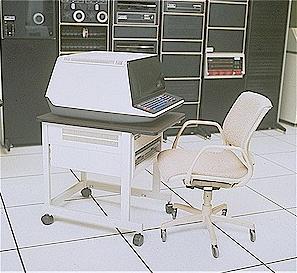|
 |
March:
DIGITAL announces a new mid-range price/performance system, the PDP-11/60.
The PDP-11/60 offered a combination of unique attributes, which were normally found in larger, more expensive computers at the time. Designed around the proven UNIBUS architecture, the PDP-11/60 included user control store features previously unavailable from DIGITAL as well as several 11/70 class features such as cache memory and RAMP. |
 |
May:
DIGITAL announces its newest computer, the DECstation, a family of components centered around the VT78 Video Data Processor.
The DECstation was a complete PDP-8 computer system implemented in large scale integration technology so that it could be packaged inside the shell of a display terminal. Designed for an interactive environment, the primary emphasis was on system capability, hence the large 16K (32Kb) memory and the array of I/O controllers. |
 |
October:
Introduction of the VAX-11/780, the first member of the VAX computer family.
VAX-11 architecture was designed to alleviate the PDP-11's most severe limitation: an address space that was too small for many applications. The Virtual Address eXtension (VAX) increased the address from 16 to 32 bits. The number of general registers also doubled from 8 to 16. The instruction set had both two and three operand formats for many common operations with either a register or memory operand allowable. |
 |
DIGITAL opens the DIGITAL Diagnosis Center (DDC) in Colorado Springs, Colorado. It is the industry's first facility for computerized remote diagnosis. |
 |
DIGITAL is the first computer company to connect to the ARPAnet. The connection is made via a PDP-10.
In 1969, the U.S. Defense Department's Advanced Research Projects Agency (ARPA) began to construct a resource sharing computer network among its contractors. This network became known as the ARPAnet, a wildly successful wide-area packet switching network that later evolved into the Internet. By 1970, the initial four-node configuration was complete consisting of UCLA, UC Santa Barbara, Stanford Research Institute and the University of Utah. From these four sites, the network expanded to thirteen by January 1971 and twenty-three by April 1972. By the time that DIGITAL joined as the first computer company in 1977, there were approximately 60 nodes in operation. |
|



